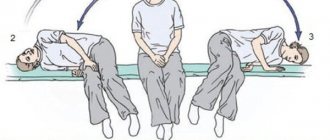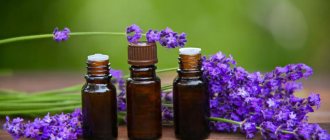“How to cure VSD?”
This is the question asked by many of our fellow citizens who suffer from headaches of unknown origin, periodic feelings of nausea, dizziness, shortness of breath and other symptoms.
There is practically no person in our country who has not heard of such a disease as VSD (vegetative-vascular dystonia) (except perhaps a little less than those who have been diagnosed with this disease at least once in their lives).
Few people, however, know that such a disorder does not exist at all, and it is not listed in the International Classification of Diseases, Tenth Revision. That is, of course, there is a disorder with such symptoms, but there is no diagnosis of “vegetative-vascular dystonia”.
Thus, the question of how to cure VSD (vegetative-vascular dystonia) should, at a minimum, be formulated differently. After all, behind this diagnosis, known only not to the territory of Russia, and perhaps also to the post-Soviet space, is something else that requires not only a “pill” method of therapy.
So where to go if you have the listed symptoms, but doctors do not find pathologies in various organs and systems?
The answer is simple: you need to see a psychiatrist. The fact is that vegetative-vascular dystonia is nothing more than somatoform autonomic dysfunction, which, according to the modern classification of diseases, belongs to class F - “mental diseases”. Therefore, the question of how to cure VSD disappears on its own - contact a specialist.
This happens because various mental disorders are sometimes disguised as physiological symptoms that the patient presents, often along with the requirement for examinations, again and again. A person, despite doctors’ assurances that he has no somatic pathology, can categorically deny this fact, suspecting that a “terrible” diagnosis is simply being hidden from him. Often such disorders are comorbid (accompanying them) with anxiety and depression. Panic attacks (formerly vegetative crisis) are not uncommon. And subjectively, a person’s condition can indeed be quite serious, although it does not threaten his physical health and passes as suddenly as it began.
Drug therapy
It is not always possible to fight vegetative-vascular dystonia without the help of medications. The main classes of drugs prescribed for vegetative-vascular dystonia:
- sedatives are inexpensive, sold without a prescription, and made from natural plant materials;
- anxiolytics will relieve excessive anxiety and anxiety;
- antipsychotics will calm the nerves;
- Antidepressants will help restore lost interest in life;
- nootropics will solve problems with memory and attention;
- drugs that improve blood circulation in the brain;
- sleeping pills will help cope with sleep disorders.
Important! Only the attending physician prescribes medications and determines dosages; it is permissible to choose only sedatives on your own.
The medications used also depend on the type of vegetative-vascular dystonia, which can manifest itself as heart rhythm disturbances (cardiac) or pressure surges (vascular), and also have both types of symptoms (mixed). For the first type of VSD, beta-blockers are often prescribed. If blood pressure tends to increase, antihypertensive medications may be necessary. If, on the contrary, the pressure is low and vegetative-vascular dystonia is diagnosed, caffeine and tinctures of tonic plants help get rid of the symptoms. For all types of VSD, antioxidants and vitamin complexes are also taken to improve immunity.
What is VSD?
In order to understand the nature of the origin of dysfunction, it is necessary to become familiar with the concept of the autonomic nervous system. The ANS is part of the nervous system, its department, which is responsible for the balance of the internal environment of the body, and also controls the functioning of the internal organs of a person, and in case of certain failures regulates their condition. An important point is that the autonomic nervous system is autonomous, its activity is not controlled by the human consciousness. If the balance of the activity of internal organs is disturbed for any reason, various types of disorders arise. Doctors are increasingly confident that the disorder is a consequence of the modern fast pace of life and occurs in both children and adults in a ratio of approximately 30/70%. We can say that the consequences of modern fast-paced life are vegetative-vascular dystonia. It is quite possible to get rid of it forever using folk remedies, medication and with the help of physiotherapy, the main thing is to understand the background of which disease the symptoms arise.
Herbal medicine
Traditional medicine has considerable experience in how and how to treat vegetative vascular dystonia at home. This is primarily treatment with decoctions and infusions of medicinal plants. These include valerian, motherwort, lemon balm, which have sedative properties, St. John's wort with the properties of a natural antidepressant, mint with a slight hypnotic effect, hops that relieve pain, hawthorn that soothes the heart and many other medicinal plants. If the hypotonic type of vegetative-vascular dystonia predominates, you can help yourself with the help of natural tonic plants - ginseng, eleutherococcus, lemongrass, Rhodiola rosea.
Folk recipes are most often presented not in the form of individual herbs, but in the form of collections. Each component has an effect on one of the symptoms, and their mixture helps to get rid of vegetative-vascular dystonia more effectively. There are many of them, here are just a few:
- A mixture of chamomile, birch buds, St. John's wort, and elecampane root is prepared as an infusion, filtered, and honey is added.
- Echinacea flowers, Rhodiola rosea root - 2 parts, hop cones - 1 part. Honey is also added to the finished infusion. A good general tonic.
- 2 parts each of the roots of Leuzea, Rhodiola, Angelica, mistletoe herb, 3 parts of valerian root and St. John's wort, 4 parts of licorice root and rose hips. The infusion is especially suitable for men.
- 2 parts each of dandelion roots, licorice, Rhodiola rosea and Leuzea, nettle leaves, wormwood, knotweed, rose hips, 3 parts each of angelica root and viburnum fruits. The gathering is considered female.
- Valerian root, cumin, motherwort, calendula and dill in equal parts - this infusion harmonizes the nervous system.
- Rose hips, barberries and black currants, taken equally, lemon balm and nettle leaves. Increases overall tone, relieves headaches and dizziness.
To prepare infusions, you usually take two tablespoons of crushed and mixed ingredients per 500 ml of boiling water. Infuse in an enamel or glass container until cool or in a thermos. Drink 60–120 ml up to three times a day.
There is also an interesting recipe, the healing effect of which is noticeable after two weeks of use. Pour a glass of oatmeal (not flakes!) into a liter of water and boil until thickened. Strain and mix the broth with the same amount of milk, add honey. Take 100 ml three times a day.
Hibiscus tea has unique properties. When hot it increases blood pressure, when cold it lowers it. You can prepare it directly in a mug or glass: one large flower is poured with boiling water, covered with a saucer and allowed to stand. In case of hypotension, it is better to drink immediately; in case of hypertension, it is better to cool it.
Juniper berries are often recommended for home treatment of vegetative vascular dystonia according to the following scheme: start with one and increase to 12 by the twelfth day of intake, then also begin to reduce one by one. These 24 days of admission constitute the course of treatment. Beekeeping products have a well-deserved reputation - honey, royal jelly, propolis and others. The enzymes, vitamins, and antioxidants they contain are useful for improving the functioning of the nervous system.
Finally, the folk recipe known as "seven glasses". This is a mixture of equal parts of Cahors, liquid honey and juices from radish, carrots, beets, lemon and garlic. Drink 100–150 ml three times a day before meals.
Does physical therapy help in the treatment of VSD?
Treatment by this method includes massage, physical therapy and physiotherapeutic procedures.
Massage helps get rid of muscle tension, achieve complete relaxation, and improves blood circulation.
Physical therapy is based on exercises that will help you concentrate, get rid of stress, and normalize your heart rate and breathing. This also includes various practices that will help in the fight against anxiety and stress, breathing exercises.
Physiotherapy stimulates blood circulation, improves muscle and vascular tone, and has a beneficial effect on the nervous system.
Against the backdrop of normalizing your schedule and nutrition, they will help cure dystonia quickly and effectively. But you will have to undergo more than one course of treatment to completely get rid of VSD.
Physiotherapy
In order to get rid of vegetative-vascular dystonia forever at home, you need to remember such an accessible remedy as ordinary water. Of course, a circular or fan shower is very rare in an ordinary apartment, but anyone can arrange a contrast shower. The body responds to the cyclical change of hot and cold water by producing stimulating hormones. Blood vessels alternately dilate and contract. This kind of training hardens them, strengthens their tone and reduces fragility. General metabolism improves. The procedure includes three cycles, each approximately 40-50 seconds, starting with hot and ending with cold water.
Note! The procedure should be enjoyable, otherwise its benefits will be questionable. The temperature contrast is selected individually; you can start with a small difference and gradually increase it. There should not be any severe discomfort. Even a small temperature difference with regular exposure is beneficial.
A good way to relax is baths. Oxygen and pearl baths are available in a sanatorium or a special physiotherapy department. You can easily arrange a relaxation session for yourself at home:
- In an aromatic bath, if you take care of suitable essential oils in advance. In particular, oils of coniferous plants or ready-made pine concentrate have a good effect on mood and emotions;
- In a bath with sea salt: blood circulation is well stimulated and the skin is cleansed.
- In a bath with mustard: dissolve 5-6 tablespoons in warm water in advance, pour into the bath (water at a temperature of 39 degrees). A bath taken before bed for seven minutes is effective against headaches.
- In a bath with herbs - chamomile, mint, oregano, lemon balm, rosemary. Each of the plants is useful in its own way, but they all relieve stress and unnecessary tension.
Strengthening capillary blood flow and activating gas exchange in the lungs can be helped with a hot chest wrap. You need to prepare two terry towels and fold a not very thick blanket four times. Then moisten a towel in hot (70 degrees) water, wring it out very well, wrap it around the chest, with a dry towel and a woolen blanket on top. Then quickly go to bed and cover yourself with a cotton blanket. After 20 minutes, remove the towels and spend another 40 minutes in bed, resting.
Physical exercise
Without physical activity, it is unlikely that it will be possible to cure vegetative vascular dystonia at home. For those patients whose symptoms of VSD are very pronounced, for older people, as well as for those who have concomitant diseases, physical therapy is more suitable. A doctor can recommend a set of exercises; the main thing is to do them regularly at home. Exercises with the body positioned upside down cannot be included in the complex. If you have hypertension, you should not lower your head low when doing exercises.
It's very good to go swimming. Playing sports are also useful because they have a positive effect on the emotional background. Aerobic, moderate strength training is included in many modern types of training. But if repeating monotonous movements seems boring or difficult, there are many types of dance fitness. In this case, there is also a load, but it is not so noticeable, and emotionally such training has a very positive effect.
Skiing and skating, cycling in the summer, light jogging, table tennis, hiking in the forest, in the mountains - all the opportunities to exercise yourself physically can be listed for a long time. But exercises with a barbell and on strength training machines are not for the period of VSD treatment. Useful exercise equipment is a treadmill, elliptical or exercise bike.
Important! For exercise, especially with aerobic exercise, the flow of oxygen is important. Therefore, you need to practice in a well-ventilated area or go out into the fresh air.
Treatment with medications
Drug therapy involves the use of:
- preparations containing magnesium and potassium;
- tranquilizers, which provide relaxation of the nervous system and have a sedative effect;
- nootropic drugs aimed at improving blood circulation;
- beta-blockers, normalizing blood pressure and heart rate;
- antidepressants.
But you cannot prescribe certain medications for yourself, otherwise you risk seriously harming yourself instead of helping.
Drug treatment is also practiced
Stress relief
Treatment of vegetative-vascular dystonia at home must necessarily be accompanied by relaxation and stress relief. To do this, you can use various practices - breathing, meditation, yoga.
Yoga
The role of yoga in relieving everyday stress has long been recognized throughout the world. It also allows you to gently get rid of vegetative-vascular dystonia. Classes should not immediately become intense, you should start gradually, dosing the load individually. It is also necessary to take into account the type of VSD and which part of the autonomic nervous system gives symptoms.
If the sympathetic department predominates, there is a hypertensive type of VSD. During classes, you need to activate the parasympathetic department. The emphasis is on bending and short relaxations, twisting while lying and sitting. When breathing, it is important to focus not on the duration of exhalation.
The hypotonic type of VSD owes its appearance to the parasympathetic part of the nervous system. Dynamic techniques, deflections, lateral bends, standing poses, and balances are preferred. All this stimulates the adrenal glands and the sympathetic nervous system. Breathing emphasis is on inhalation.
Breath
Breathing practices with regular exercise will improve the blood supply to the brain, give impetus to improving metabolism, the result will be improved well-being and relief from vegetative-vascular dystonia. There are many exercises. One of them is called “Full Breathing”. The exercise is performed standing, arms along the body, legs slightly apart. In the process of inhaling, you need to slightly rise on your toes, you can raise your arms up through your sides. As you exhale, lower your arms and lower them.
- Inhale, expanding your belly (filling the bottom of your lungs).
- Expansion of the chest (filling the middle part of the lungs).
- Inject air into the collarbone area (filling the upper part of the lungs).
- Hold your breath for a few seconds.
- Release the air from your stomach.
- Release air from the ribs area.
- Complete the release of the upper part of the lungs.
Meditation
You can find harmony with yourself, restore peace and tranquility by mastering meditative techniques. This immersion into oneself makes it possible to harmonize the energy of thoughts, extinguish anxious and panicky ones. This condition makes it possible to independently help yourself with vegetative-vascular dystonia. It will take willpower and concentration to do it regularly. But the effect will be long-lasting.
There are many meditation techniques, but you should not blindly imitate someone who is practicing. It is important to adhere to the general rules. It is necessary to completely retire, monitor your breathing and lengthen your exhalation, visualize the situation or image in which you would like to be. Body position is not that important. First of all, the lotus pose comes to mind, but during meditation you can sit on a chair or lie down. Convenience and comfort are important. The eyes are closed, but sometimes the gaze is focused on some object or point.
You can find out more about how to deal with various psychological problems using meditative practices on the channel of psychologist Nikita Valerievich Baturin.
Causes
The causes of autonomic dysfunction include:
- genetic inheritance, i.e. some signs of dystonia can be observed already in childhood;
- diseases of the nervous system - central, peripheral (malfunction of the hypothalamus, brain stem);
- chronic diseases of the cardiovascular, endocrine systems, gastrointestinal tract;
- stress, constant overwork, overexertion;
- alcohol abuse;
- smoking;
- depression, anxiety, emotional or mental instability.
Most often, the condition of dystonia occurs in the form of neurosis with symptoms very similar to those of various chronic diseases. The development of the disorder occurs after severe stress, and the human psyche does not accept the traumatic situation, but seems to project it onto the internal organs. Manifestations of autonomic dysfunction can affect a variety of organs and systems, individually or together.
As noted earlier, the autonomic nervous system regulates biochemical and physiological processes in the body: from maintaining normal human body temperature and normal blood pressure levels to the activities of the endocrine, immune systems, etc.
Balanced diet
Treatment of vegetative vascular dystonia at home is impossible without harmonizing nutrition. Minerals and vitamins should be present in the diet in sufficient quantities, but foods containing harmful substances and toxins should be excluded from the menu:
- less processed and canned food, fast food;
- limit salt and salty foods;
- forget about fried, smoked, fatty foods;
- eat sweets and sugar less often.
You need to replace unwanted foods with fresh vegetables and fruits, dried fruits and nuts, lean meat and fish, cereals and legumes, fermented milk drinks and cottage cheese. There are even more healthy foods than harmful ones; they won’t let you go hungry.
Manifestations of VSD
Let's look at the most common syndromes that vegetative-vascular dystonia leads to. Symptoms in adults may include:
- Cardiovascular syndrome, which is expressed by bradycardia, tachycardia, i.e., heart rhythm disturbance; blood pressure disorders; chilliness of the limbs; pallor of the skin. In this case, aching pain and discomfort in the heart area occur, not associated with physical activity.
- Rapid and difficult breathing, constant lack of air - all these are signs of hyperventilation syndrome. It occurs because the composition of the blood changes, a high alkali content is observed due to the loss of carbon dioxide, as a result of which the respiratory center is depressed. All this leads to muscle spasms, loss of sensitivity in the limbs, and the person experiences dizziness.
- Sexual disorders. In men, erection decreases; in women, vaginismus may occur.
- Disturbances in the gastrointestinal tract manifest themselves in the form of discomfort during and after meals, nausea, and vomiting.
- Cystalgia is frequent and painful urination without changes in the urine.
- Increased sweating of the palms and soles of the feet.
- A constant slight increase in temperature and chills characterize a violation of thermoregulation. This phenomenon is often observed in childhood.
General recommendations
It is possible to fight and defeat vegetative-vascular dystonia if all possible treatment methods are used in combination. However, bad habits will always be an obstacle on this path. Therefore, you need to gather your willpower and urgently change what is definitely not beneficial:
- quit smoking, don’t drink alcohol;
- establish a routine, go to bed before midnight, get enough sleep;
- do not overwork—the balance between work and rest is important;
- a walk in the fresh air should become a replacement for television programs and social networks;
- find interesting and useful hobbies, hobbies that will improve your mood and distract you from bad habits;
- choose pleasant, interesting people to communicate with;
- enjoy life or just smile more often. A smile engages the right part of the brain, and a positive emotion will follow.
Anyone who is working on themselves, their character and health will benefit from the advice of psychologist Nikita Valerievich Baturin.
How to overcome panic attacks, VSD and neurosis
First of all, it is necessary to understand that the more a person “attaches” to the state of his health, the more often he will experience exacerbations. To combat panic attacks, you need to clearly decide for yourself that the time has come to radically change your life. The recipe for recovery, which has helped many patients, is extremely simple, but following the recommendations every day is very difficult.
First of all, you need to love everything that a person does. This should apply to all aspects of life. You need to discard all thoughts that a person is dissatisfied with his job or experiencing dissatisfaction with his family life. You need to learn to look for the positive aspects in everything. Even if a person was fired from his job, he should take this event as an opportunity to realize himself in another area or do something more interesting or profitable.
If we talk about how to overcome the fear of death during VSD, then first of all you need to try not to get hung up on attacks of pathology. Of course, when a person experiences severe suffocation and it seems to him that he will not survive it, it is difficult to think about good things. However, you need to overcome yourself and learn to concentrate on even breathing and switch to other thoughts. At such moments, it is strictly forbidden to think about bad things. It is best if phrases are spinning in your head that the attack will soon pass, it is just a neurosis, and not a terrible illness, etc.
Those patients who adhered to these recommendations noted that after just a few weeks of hard work they understood how to defeat VSD. Feedback from these people confirms that you need to stop focusing too much on your diagnosis and learn to notice the positive in your life. Also, do not forget about other tips.










